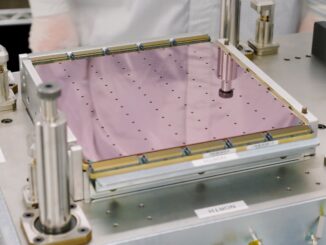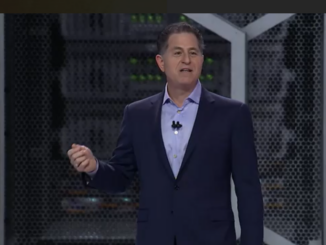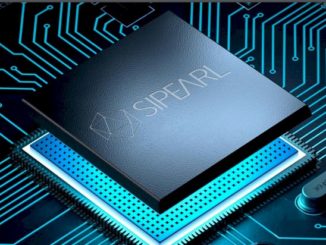
There are four businesses that are very difficult for an equipment manufacturer in the IT sector to make any money on: smartphones, PCs, datacenter servers, and services. And Lenovo is one of the biggest shippers of both, and it has done a remarkable job taking the Motorola smartphone business and the IBM PC business and cutting out design and manufacturing costs and turning some profits.
The datacenter continues to be a challenge for Lenovo, however, and the GenAI boom is making it worse rather than better as is the case across all of the major OEMs that are pressed to squeeze some profits from this mainstream HPC hardware business. Some days, it looks like the only companies actually profiting from the GenAI boom are Taiwan Semiconductor Manufacturing Co, which is making compute and switching engines, and Nvidia, which has the lion’s share of compute and a big share of networking for clusters supporting AI workloads.
But, like other OEMs in the datacenter, Lenovo has little choice but to keep forging ahead and try to add value to AI systems so it can extract that back out – and perhaps a little more – as profits.
In the first quarter of fiscal 2026 ended in June, Lenovo brought in $18.83 billion in sales, up 21.9 percent year on year. Gross profits were up 8 percent to $2.77 billion, operating income was up 59 percent to $785 million (we are not sure why there was such a big jump), and net income was up by 60.1 percent to $389 million. The company ended the quarter with $4.51 billion in the bank, which is the most money it has ever had in the bank but perhaps a little lean, relative to its embiggened size, thanks to its substantial investment in research, development, and manufacturing capacity around the globe.
The Infrastructure Solutions Group at Lenovo, which acquired the System x server and HPC cluster business from IBM more than a decade ago, set its seventh record quarter for revenues in a row, which is quite a streak, thanks to a booming AI server business – particularly in China but not exclusively there by any means.
In the June quarter, Lenovo’s ISG posted $4.29 billion in sales, up 35.8 percent year on year and up 4.1 percent sequentially from Q4 F2025. While the growth is commensurate with what Dell and Hewlett Packard Enterprise is seeing in their respective server businesses thanks to an X86 server refresh cycle that has been delayed a bit by immense spending on AI servers and by economic uncertainty, Lenovo is still having trouble making a buck in its datacenter business at the middle line, with an operating loss of 86 million in Q1 F2026.
Back before the fourth quarter of fiscal 2023, Lenovo used to print out charts that showed sales of datacenter infrastructure to Cloud Service Providers (CSPs), what we break down as hyperscalers (those who have vast infrastructure to run customer-facing applications either supported by advertising or subscriptions) and cloud builders (those who have vast infrastructure that they virtualize and rent out in utility fashion). Lenovo also used to give out numbers for Enterprises and SMBs, the traditional customers of the old IBM System x business.
Since that time, based on what little Lenovo says in its quarterly reports and meeting with Wall Street analysts, we have been building a model to keep this dataset alive. In its report, Lenovo said that sales ISG products to CSPs were up 36 percent year on year, and to ESMBs was up 35 percent year on year. Our model says Lenovo’s CSP division did $2.41 billion in sales, up 36.3 percent, and the ESMB division did $1.88 billion in sales, up 35.1 percent. The CSP division was down 3.7 percent sequentially from $2.5 billion, but this was the second highest level of revenues from CSPs in Lenovo’s history. The ESMB division was up 16.3 percent sequentially as companies moved to more current X86 iron based on the most recent Intel Xeon and AMD Epyc processors.
We do not know the operating income of either the CSP or the ESMB division. But Winston Cheng, chief financial officer at Lenovo said this on the call:
“You probably will have noticed that the ISG business for us have been growing quite fast. And in particular, we have disclosed that our AI server revenues more than doubled year-on-year.”
“As you are very familiar with the dynamics of the current AI server industry that the margins in this segment, the deals are large, but can be slightly lower in terms of the gross margin as it relates to other segments of the server business, such as the SMB space – or in terms of our IDG business. So overall, our gross margin actually would have been much higher – actually, north of 17 percent – if we take out the CSP business. So I think that’s what I would really emphasize for you.”
Well, that is something we can do some math on.
Lenovo had $2.77 billion in gross profits against $18.83 billion in revenues, which is 14.7 percent. If gross profits were “north of 17 percent” – call it 17.2 percent so it rounds down – then the non-CSP part of Lenovo had $16.42 billion in sales and around $2.82 billion in gross profits. That means the CSP business had a gross loss of $50 million. If you allocate the operating expenses of all of Lenovo proportional to revenues – then the CSP division had $255 million of operating expenses (that’s $2,411 divided by $18,830 times $1,989), which is $255 million in operating costs, and if you subtract that out against the gross profit, you get an operating loss of $305 million for the CSP business.
What that means is that for every $7.90 Lenovo makes on selling CSP iron – which is mostly AI systems as far as we can tell – it loses $1.00 at the operating level.
What this also implies is that the ESMB division pulled in an operating profit of $391 million, which is a very nice 20.8 percent of revenue. If costs were more heavily allocated to CSP systems in Q1 F2026, then the ESMB business would be even more profitable than our calculations show. We have a hard time believing that the ESMB business could be a lot more profitable than the Solutions & Services Group, which averaged 21.1 percent of revenues in the past five years, or the Intelligent Devices Group, which averaged 7.2 percent over the same term against a much larger revenue stream. This latter bit is how Lenovo can afford to invest in its datacenter business.
Our Lenovo model not only tracks the CSP and ESMB divisions, but also tries to split AI system sales from other non-AI system sales each quarter. We estimate that Lenovo sold just under $3 billion in AI systems in Q1 F2026, up by a factor of 2.8X year on year and up 18.7 percent sequentially from the $2.51 billion we think it sold in Q4 F2025 ended in March. Lenovo did not talk about its pipeline, but our best guess is that it is probably more than 1.5X the trailing twelve months of revenue that has been booked so far and well above $10 billion and probably kissing $12 billion.
When evaluating how ISG is doing, we think it is probably best to look at it on an annual basis, not a quarterly basis. Server spending has been sluggish and then a bit choppy, there is a trade war going on between the two countries where Lenovo has a huge presence and hails from (the United States and China), and the AI and HPC businesses are always choppy with low profit margins. (Again, excepting for certain compute engine providers, historically.)
If you do that, you see that Lenovo is working hard, but it really has not profited all that much from its hard work:
That’s a tough set of curves. The ISG revenue is up by a factor of four since the IBM System x takeover, but the profitability, if it can be had at all, is so small it is hard to see it.
That said, we admire Lenovo’s tenacity in servings its customers and working towards eventually configuring ISG to be profitable. It has the time and the savings to get there. And with Ashley Gorakhpurwalla being named president of ISG back in November 2024 after managing various datacenter infrastructure businesses at Dell for two decades (with a stint at Western Digital for four years before joining Lenovo), there is a good chance Lenovo will find a way to be profitable in the datacenter.
Nvidia could help by giving OEM partners who make infrastructure based on its compute and networking engines a little bit more margin.










Be the first to comment